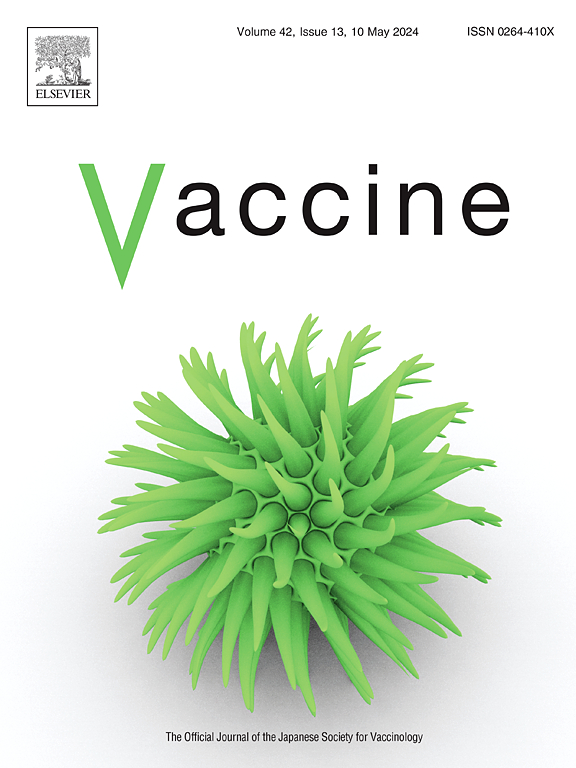评估荷兰老年人RSV疫苗接种策略的成本效益
IF 4.5
3区 医学
Q2 IMMUNOLOGY
引用次数: 0
摘要
目的本研究评估荷兰老年人呼吸道合胞病毒(RSV)疫苗接种的成本-效果,旨在确定最有效的疫苗接种策略。方法建立静态决策树成本-效果模型,比较荷兰成人在6个RSV季节中不接种疫苗和不同的RSV疫苗接种策略。策略包括接种≥60岁、≥75岁和≥75岁的成年人,并结合60 - 74岁的高危人群。每隔两年和三年进行一次评估。该模型从社会的角度,结合了与呼吸道合胞病毒疾病和疫苗接种相关的健康结果和成本。使用了最近的发病率数据,疫苗有效性基于门诊设置的荟萃分析的有效性和住院设置的实际有效性数据。采用每质量调整生命年(QALY) 5万欧元的支付意愿阈值,进行了概率敏感性分析。结果每3年为≥75岁的人群和高危人群接种疫苗,第一年可预防约19,000次全科医生就诊,3300次住院(包括245次重症监护住院)和870例死亡。该策略将避免2950万欧元的医疗保健成本和630万欧元的生产力损失,获得2900个质量年。它具有成本效益,平均成本效益比(ACER)为30,804欧元/QALY。最具成本效益的策略是每三年为≥75岁的人接种一次疫苗,与不接种相比,增量成本-效果比(ICER)为23,080/QALY。每三年为所有≥60岁的人接种疫苗可获得最高的QALY收益,ACER为39,918欧元/QALY。与≥75和高风险策略相比,该方法的ICER为107,623欧元/QALY,而与≥75策略相比,75+和高风险策略的ICER为61,987欧元/QALY。两年策略与较高的ACERs相关,并在增量比较中占主导地位。结论荷兰老年人接种rsv疫苗具有成本效益,特别是每三年接种一次。本文章由计算机程序翻译,如有差异,请以英文原文为准。
Evaluating cost-effectiveness of RSV vaccination strategies for older adults in the Netherlands
Objective
This study evaluates the cost-effectiveness of respiratory syncytial virus (RSV) vaccination for older adults in the Netherlands, aiming to identify the most effective vaccination strategy.
Methods
A static decision tree cost-effectiveness model was developed to compare no vaccination with various RSV vaccination strategies for Dutch adults over six RSV seasons. Strategies included vaccinating adults aged ≥60, ≥75, and ≥75 combined with high-risk individuals aged 60–74. Each was assessed with two- and three-year intervals. The model incorporated health outcomes and costs associated with RSV disease and vaccination from a societal perspective, with a lifetime horizon. Recent incidence data were used, and vaccine effectiveness was based on efficacy from a meta-analysis for outpatient settings and real-world effectiveness data for inpatient settings. A probabilistic sensitivity analysis was conducted, using a €50,000 per quality-adjusted life year (QALY) willingness-to-pay threshold.
Results
Vaccinating individuals aged ≥75 years and high-risk groups every three years could prevent approximately 19,000 general practitioner visits, 3300 hospitalizations (including 245 intensive care admissions), and 870 deaths in the first year. This strategy would avoid €29.5 million in healthcare costs and €6.3 million in productivity losses, gaining 2900 QALYs. It was cost-effective, with an average cost-effectiveness ratio (ACER) of €30,804/QALY. The most cost-effective strategy was vaccinating ≥75 year-olds every three years, with an incremental cost-effectiveness ratio (ICER) of 23,080/QALY compared to no vaccination. Vaccinating all ≥60-year-olds every three years resulted in the highest QALY gain, with an ACER of €39,918/QALY. Compared to the ≥75 and high-risk strategy, this approach had an ICER of €107,623/QALY, whereas the 75+ and high-risk strategy had an ICER of €61,987/QALY compared to the ≥75 strategy alone. Biennial strategies were associated with higher ACERs and were dominated in incremental comparisons.
Conclusion
RSV vaccination for older adults in the Netherlands can be cost-effective, particularly when vaccinating every three years.
求助全文
通过发布文献求助,成功后即可免费获取论文全文。
去求助
来源期刊

Vaccine
医学-免疫学
CiteScore
8.70
自引率
5.50%
发文量
992
审稿时长
131 days
期刊介绍:
Vaccine is unique in publishing the highest quality science across all disciplines relevant to the field of vaccinology - all original article submissions across basic and clinical research, vaccine manufacturing, history, public policy, behavioral science and ethics, social sciences, safety, and many other related areas are welcomed. The submission categories as given in the Guide for Authors indicate where we receive the most papers. Papers outside these major areas are also welcome and authors are encouraged to contact us with specific questions.
 求助内容:
求助内容: 应助结果提醒方式:
应助结果提醒方式:


